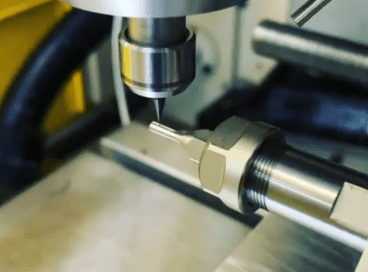Precision machining is a process that has become increasingly important in manufacturing. With the ever-growing demand for high-quality products, precision machining allows for the production of parts that are both accurate and durable. In this blog post, we will provide an overview of precision machining and its applications, so that you can better understand why it’s such an important process and what advantages it offers your business.
Precision Micromachining: A Brief History
Precision micromachining is the process of creating very small pieces of metal or other material by using extremely fine tools and techniques. The term “precision” refers to the level of accuracy with which these pieces are made.
The origins of precision micromachining date back to the 17th century when scientists began trying to create accurate ways to make smaller guns and other weapons. Over time, this technology has been used in a variety of applications, including aerospace engineering and manufacturing.
One of the most common uses for precision micromachining is in the production of microchips. These tiny pieces of metal are used in a number of different devices, from computers to cell phones. By using precise tools and processes, manufacturers can create microchips that are very small (in terms of size and weight) and yet still function properly, here you can find micromachining services.
Another major application of precision micromachining is in the manufacture of components for high-tech devices. By creating extremely small parts, manufacturers can save a lot of time and money when it comes to producing these items. This technology is also being used increasingly in new types of products, such as medical implants and optical systems.
Overall, precision micromachining is an important tool that can be used in a variety of industries. It has implications not only for manufacturing but also for design and engineering workflows. As technology continues to evolve, so too does the scope and applicability of precision micromachining.
The Types of Applications for Precision Micromachining
Precision micromachining and micro precision parts offer a variety of potential applications for engineers and manufacturers. The technology can be used to create small objects with complex geometries or to control the shapes and movements of larger components. In this article, we will explore the different types of precision micromachining and some of the most common applications.
Types of Precision Micromachining
There are three main types of precision micromachining: microlithography, microfabrication, and micro radiation lithography. Each has its own strengths and weaknesses, so it’s important to choose the type of precision machining that best suits your application.
Microlithography is a process used to create miniature images on a material using a light source and a photosensitive medium. This technique is often used to create patterns on products such as electronic circuit boards or glass frames. Microfabrication is similar to microlithography, but it uses machinery to divide the object into small pieces that can then be fabricated into the desired shape. Micro Radiation lithography uses radiation instead of light to create images on materials. This method is often used to create parts with complex shapes that are difficult or impossible to achieve using other techniques.
Common Applications for Precision Micromachining
Precision machining can be used in a variety of industries, including medical devices, aerospace engineering, polymer synthesis, and automotive manufacturing. Here are four common applications for precision machining:
Microlithography is used to create small patterns on products such as electronic circuit boards or glass frames.
Microfabrication is used to create small, precise parts using machinery.
Micro Radiation lithography is used to create parts with complex shapes that are difficult or impossible to achieve using other techniques.
Aerospace engineering uses precision machining to create components for aircraft, spacecraft, and satellites.
Polymer synthesis uses precision machining to control the size, shape, and properties of polymer molecules.
Automotive manufacturing uses precision machining to create parts for cars, trucks, and motorcycles.
The Process of Precision Micromachining
Precision micromachining is a process that allows for the production of very small objects with extremely high accuracy. The key to achieving this level of precision is the use of highly polished and precisely shaped tools called toolsets. These toolsets are typically composed of a number of different precision cutting tools, including end mills, vertical milling machines, horizontal milling machines, and rotary drills.
The process begins by creating a rough outline or model of the object that is to be manufactured using CAD (Computer-Aided Design) software. This model can then be used to create a toolset that will allow the precise cutting of the desired shape. Once the toolset has been created, it can be machined using one of the aforementioned precision cutting tools. This process usually results in the production of very small, accurate parts that can be used in a variety of applications.
Precision micromachining is an increasingly popular process due to its ability to produce high-quality parts with minimalistic design requirements. By using precision cutting toolsets and CAD models, manufacturers are able to create parts that are accurate to within ±0.0002 inches (±0.005 mm). This level of accuracy makes Precision Micromachining an ideal method for producing components for various industrial applications, such as aerospace manufacturing and medical devices manufacturing.
The Benefits of Precision Micromachining
Precision micromachining is a manufacturing process that uses precision tools and techniques to create small, accurate parts or components. The benefits of precision micromachining include improved quality, reduced processing time, and lowered costs.
Precision micromachining can be used to create a variety of components, including sensors, gears, bearings, and valves. It is also used to produce parts for medical devices, aerospace applications, and industrial machinery.
Precision micromachining is typically done using automated machines that are controlled by computer software. The machines use a range of precision tools and techniques to create the desired part. These tools include milling machines, lathes, drill presses, and surface mills.
The benefits of precision micromachining include:
Improved Quality: Precision micromachining produces parts with greater accuracy than traditional manufacturing methods. This results in better quality products that are less prone to defects.
Reduced Processing Time: Precision micromachining reduces the processing time required to create a part by reducing the number of steps required to make the part. This can save money on both the cost of the part itself and the cost of the materials needed to make it.
Lower Costs: Precision micromachining is often more affordable than traditional manufacturing methods. This is due in part to the increased accuracy achievable with this technology and the reduced processing time required.sma
Conclusion
Precision micromachining is a rapidly growing area of manufacturing where small features and components are fabricated with high precision. Applications for precision micromachining include MEMS, 3D printing, medical devices, aerospace and defense, automotive and many other industries. In this article we provide an overview of the Precision Micromachining process and discuss some of its applications. I hope that this article has been helpful in understanding what precision micromachining is and why it is such an important technology for the future.





























